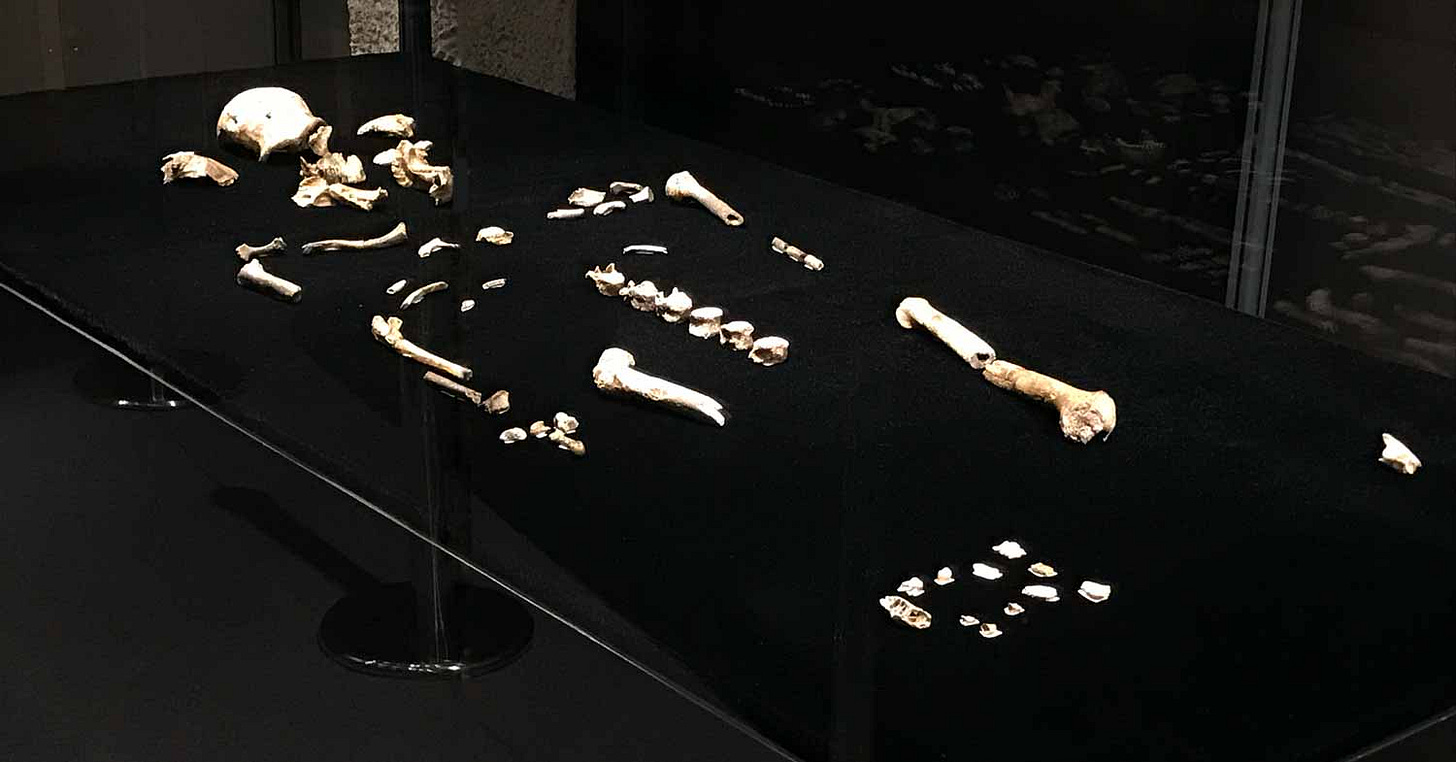Research highlight: Vertebral wedging in Homo naledi
In a new paper led by Scott Williams, we look at the way that the Homo naledi lower vertebral column compares to humans and other extinct hominins.
Citation: Williams, S. A., Zeng, I., Guerra, J. S., Nalla, S., Elliott, M. C., Hawks, J., Berger, L. R., & Meyer, M. R. (2022). Homo naledi lumbar vertebrae and a new 3D method to quantify vertebral wedging. American Journal of Biological Anthropology, 179(3), 491–500. https://doi.org/10.1002/ajpa.24621
Scott Williams is one of the world's leading experts in the form of hominin vertebrae and the overall spinal column. I feel really fortunate to be able to collaborate with him and other experts in understanding what the vertebrae of Homo naledi have to tell us about the bodies and lives of this ancient species.
In our earlier work on H. naledi fossils from the Dinaledi Chamber, vertebrae were some of the least well represented portions of the skeleton. Among the more than 2000 fossil fragments we do have many vertebral fragments. But complete vertebrae are comparatively rare within this sample. In the fossils that we published in 2015, the best-preserved vertebral remains are a tenth and eleventh thoracic vertebra (T10 and T11) from one individual, and an articulating fragment of eleventh rib. We're not sure yet whether this short portion of articulated thorax belongs to an individual from whom we have additional remains, and it may be very hard for us to work this out.
The discovery of the Lesedi Chamber fossils brought a lot more information about the vertebral column of H. naledi. The LES1 skeleton, which we nicknamed, “Neo”, has large portions of four of its five lumbar vertebrae, the T10 and T11 thoracic vertebrae, and additional small fragments of many other thoracic and cervical vertebrae. We published the first descriptions of this material and the rest of the LES1 skeleton in 2017. But there was still much left to do.
Now, Scott and our collaborators have used the opportunity provided by the LES1 vertebral column to develop a new method of looking at the lumbar column. The team looked at the way that the vertebrae are wedged, giving the lumbar column its distinctive lordosis, or anterior curve.
One of the big changes when our lineage evolved obligate bipedality was in the lumbar spine. Humans and fossil hominins have a different relationship of the spine and pelvis than in most other primates. Vertebral bodies are generally shaped like a little cylinder, and together with the intervertebral discs they form a single column. But the top and bottom of each vertebral body are not necessarily parallel to each other. Many vertebrae have bodies that form a slight angle, or wedge. For the lumbar vertebrae in humans and our hominin relatives, each of these wedges combine to create a curve.
The simple way to measure this vertebral wedging is to take the linear measurement of the height of the front of the vertebral body and compare it to the back. For lumbar vertebrae, the front is slightly longer. But fossil vertebrae are often broken or fragmented in ways that make this measurement difficult or impossible. There are other ways to get the same information, which involve measuring the wedge directly by fitting a plane to the preserved portions of the top and bottom of the vertebral body. That's what Scott and the team set out to do.
The paper describes this method of measurement and uses the LES1 vertebrae as an example of the method in action. The results enable us to put LES1 directly in comparison with other human and extinct hominin lumbar vertebral columns. The lumbar wedging of H. naledi is within the range of today's humans for all of the preserved lumbar vertebrae. That's very much the same story as other fossils of Homo including Neandertals. It's also generally true for Australopithecus fossils such as the “Lucy” skeleton AL 288-1 and the Sts 14 vertebral column of Australopithecus africanus.
This makes a nice addition to our overall picture of H. naledi and may provide a useful way of looking at the form of vertebrae from other parts of the fossil record.




